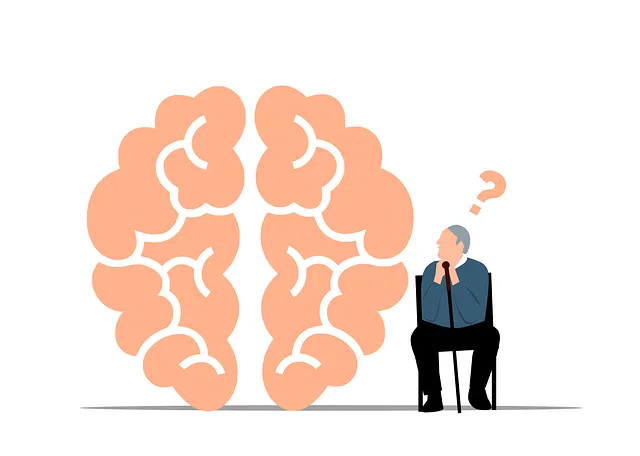Littleton residents have access to mental health support through Kaiser insurance plans, offering various therapy options and accessibility. Evaluating mental wellness programs requires assessing both short-term and long-term impacts using quantitative (GAD-7 assessments) and qualitative methods (interviews, focus groups). Success includes improved mental well-being, mood management, and reduced stigma. Effective programs adapt based on feedback and community needs, ensuring services remain relevant. Comparatively, Littleton offers holistic care with a focus on cultural sensitivity, while Kaiser provides comprehensive traditional therapies. The choice depends on individual preferences for personalized or integrated care.
Evaluating mental wellness programs is crucial for ensuring their effectiveness and impact. This article explores various methods to assess these programs, from understanding key evaluation techniques to measuring participant outcomes and satisfaction. We delve into the importance of feedback loops for continuous improvement and compare two prominent coverage models: Littleton and Kaiser, focusing on their approaches to mental health therapy. By examining these aspects, we aim to provide a comprehensive guide for optimizing mental wellness initiatives.
- Understanding Mental Wellness Program Evaluation
- Methods for Assessing Program Effectiveness
- Measuring Participant Outcomes and Satisfaction
- Incorporating Feedback Loops for Continuous Improvement
- Littleton vs Kaiser: Coverage and Considerations for Mental Health Therapy
Understanding Mental Wellness Program Evaluation

Methods for Assessing Program Effectiveness

Evaluating the effectiveness of mental wellness programs is a multifaceted process that goes beyond simple participant satisfaction. At its core, assessing program success should measure tangible improvements in individuals’ mental health and overall well-being. This involves employing diverse methods to capture the program’s impact, from quantitative data like pre-post assessments of symptoms and anxiety levels (using validated tools like the GAD-7 for Generalized Anxiety Disorder) to qualitative feedback through interviews or focus groups.
For instance, examining changes in mood management techniques, emotional well-being promotion techniques, and confidence boosting are crucial indicators of program effectiveness. Additionally, tracking participant engagement, attendance rates, and retention over time offers valuable insights into the program’s appeal and adaptability. Littleton and Kaiser’s coverage of mental health therapy (as relevant to the target population) also plays a role, ensuring accessibility and affordability for those seeking support.
Measuring Participant Outcomes and Satisfaction

Evaluating the success and impact of mental wellness programs is a multifaceted process, with one crucial aspect being the measurement of participant outcomes and satisfaction. This involves assessing both the short-term and long-term effects of the program on individuals’ mental health and overall well-being. By employing various quantitative and qualitative methods, organizers can gain valuable insights into what works and identify areas for improvement.
In the context of Littleton does Kaiser cover mental health therapy, satisfaction surveys and participant interviews are powerful tools to gauge success. These methods allow individuals to voice their experiences, provide feedback on program content and delivery, and share personal stories of growth or challenge. Additionally, tracking key mental health metrics before, during, and after the program can demonstrate its effectiveness in reducing symptoms of mental illness stigma reduction efforts and improving overall psychological well-being, especially when considering the cultural sensitivity in mental healthcare practice. Well-designed mental health education programs should also aim to enhance participants’ knowledge, skills, and attitudes related to their mental health.
Incorporating Feedback Loops for Continuous Improvement

Effective mental wellness program evaluation involves establishing robust feedback loops to facilitate continuous improvement. By actively gathering and analyzing participant feedback, organizations like Littleton can identify areas for enhancement in their programs, be it a Mental Health Education Program designed to prevent depression or boost confidence. This data-driven approach ensures that services align with the evolving needs of individuals seeking support.
For instance, Kaiser’s coverage of mental health therapy plays a significant role in community accessibility. Feedback loops allow program coordinators to adapt their strategies, ensuring that the offered therapies and educational initiatives remain relevant and impactful. Incorporating participant insights fosters an environment where mental wellness solutions are refined over time, ultimately enhancing service delivery and outcomes for those seeking help.
Littleton vs Kaiser: Coverage and Considerations for Mental Health Therapy

When comparing Littleton to Kaiser in terms of mental health therapy coverage, it’s crucial to understand their distinct approaches and what this means for access to care. Both are renowned healthcare providers, but their differences in structure and focus impact how they address mental wellness.
Littleton, often known for its community-based approach, emphasizes holistic care that goes beyond traditional therapy sessions. They prioritize self-care routine development for better mental health and offer programs focused on stress management tailored to diverse populations. This includes cultural competency training for healthcare providers, ensuring a sensitive and inclusive environment. In contrast, Kaiser, as a large, integrated healthcare system, provides comprehensive coverage including mental health services. However, while they offer a wide range of therapies, their focus may be more on disease management than on fostering resilience through stress management techniques and self-care promotion, which is where Littleton excels. Choosing between the two depends on individual needs and preferences for care delivery models.
Evaluating mental wellness programs is essential for understanding their impact and identifying areas for improvement. By utilizing various assessment methods, including participant outcomes and satisfaction surveys, as well as continuous feedback loops, programs can effectively measure success. When comparing options like Littleton and Kaiser for mental health therapy coverage, it’s crucial to consider the scope of services provided and how each organization supports individual wellness journeys. This analysis ensures that mental wellness initiatives are not only reaching their intended goals but also evolving to better serve those seeking support.




